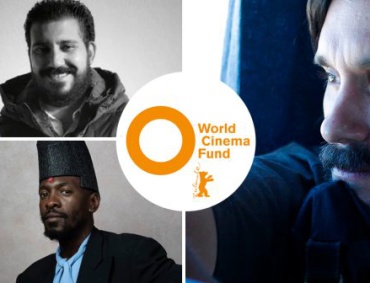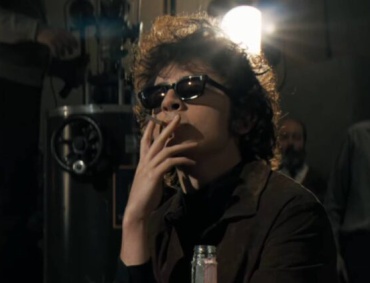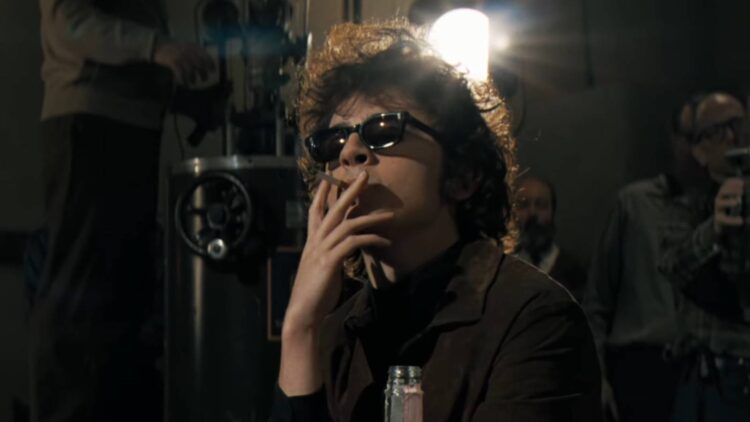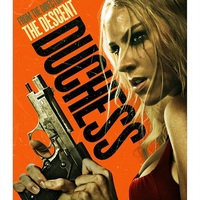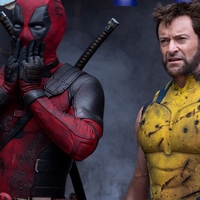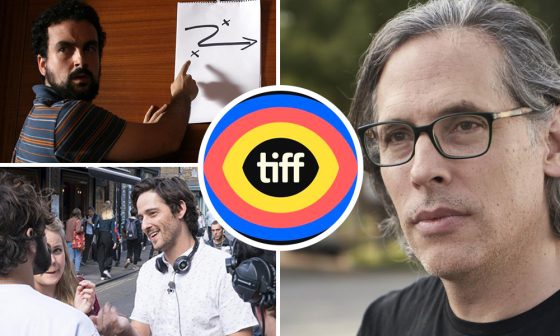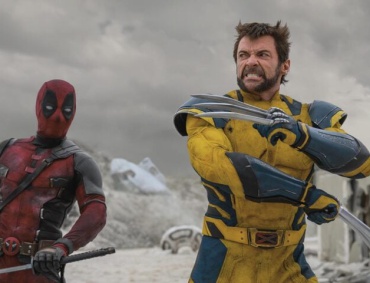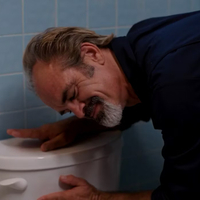
“Deadpool & Wolverine” exists because Hugh Jackman, who has played Wolverine nine times and had supposedly retired the character after 2017’s “Logan,” loved the Deadpool series and was friends with star Ryan Reynolds. He wanted the mutant with the adamantium claws to team up with the Merc with the Mouth, preferably in a buddy movie modeled partly on R-rated 1980s action flicks like “48 Hrs.” The end product is true to the spirit of the franchise while pushing its self-aware humor and fourth wall-breaks until it all seems like the result of a dare: how big can we make the air quotes around “sincerity” while still tugging on heartstrings?
SPOILERS WILL FOLLOW
About half an hour into the movie, Wade gets sent on a multiverse-spanning mission that ends up teaming him with Wolverine (never mind the reasons; you’ll learn them anyway when you see the movie, which will make a billion dollars no matter what somebody like me has to say about it) and the duo ends up traversing a prison-like zone ruled by Cassandra Nova (Emma Corwin), a bald, skeletally slender twin sister of Charles Xavier. The place is filled with debris and monuments, all seemingly drawn from films released by Disney and 20th Century Fox (which was swallowed by Disney in 2019).
I’m sure there’ll be a comprehensive bullet-pointed list on the film’s Wikipedia page by the time you read this, but among other things I believe I spotted a S.H.I.E.L.D. helicarrier, the spires of the Williamsburg bridge (site of an important Spider-Man battle) and the top of the Statue of Liberty’s torch (the original 1968 “Planet of the Apes” was a Fox production), all buried in the ground like the “two vast and legless trunks of stone” in Percy Bysshe Shelley’s poem “Ozymandias.” This zone is referred to as a “metaphorical junkyard.” The phrase can be read two ways. I suspect Deadpool’s arched-eyebrow playfulness inclines it toward the second reading: a dumping ground for pop culture metaphors, especially the kind you encounter in comic books and movies based on them.
Furthermore: every significant Marvel Comics character we encounter here, Deadpool and Wolverine included, were first brought to life in a big-budget, live-action film released by Fox, not Disney. Which means the metaphors in this junkyard include comic book characters who, in addition to being themselves, are walking metaphors for aspects of society, psychology, or some political or social condition. I won’t tell you which characters show up, even though (the Internet being what it is) you’ll have heard all of them by the time you read this. Suffice to say the movie resurrects not just Logan/Wolverine and Wade/Deadpool (many, many times!) but other commercially “dead” Fox superhero characters, not just from long-running film brands like the “X-Men” movies but ones that were unsuccessful.
Not for nothing does the first Deadpool-Wolverine fight happen around a giant stone-carved version of the 20th Century Fox logo that used to appear in front of Fox movies: a studio had to be sacrificed for this film to exist. Cinema history obsessives who can tolerate Ryan Reynolds’ mugging and pratfalling and verbal footnoting will appreciate that, among other things, “Deadpool & Wolverine” is a superhero version of a memorial service for a studio and the various franchises and undeveloped projects that were discarded or decommissioned when it was bought. Lazarus-styled IP tributes are handled with more wit and humor (not to mention basic decency) here than the AI whirlwind of rubber-faced DC characters trotted out in Warner Bros. “The Flash.” The movie’s wry awareness of the profit motive takes a bit of the sting out as well. “Fox killed him,” Wade says of Logan, “Disney brought him back. They’re gonna make him do this till he’s ninety.”
Also, not for nothing: the movie’s main story is about literal as well as figurative resurrections. When we meet Wade for the first time in six years, he’s been kicked to the curb by his girlfriend and rejected by the Avengers and has resigned himself to being a “loser” and is now selling used cars and wearing a bad hairpiece. He gets roped into service by Mr. Paradox (Matthew MacFayden), an agent for the Time Variance Authority (TVA) who has developed a “Time Ripper” that can mercy-kill timelines that have lost their “anchor being.” Again, there’s no point getting deep in the plot weeds in a review of a film like this, so let’s say that to head off apocalyptic problems in Wade’s own timeline, he has to capture a Wolverine from one of the other timelines and replace him in the one where he was a tragically deceased “anchor being” holding that strand together.
In service of all the tomfoolery and shenanigans that ensue, the movie turns subtext into text and bold-faces it. Wade revels in declaring himself a timeline Jesus. In one timeline-jumping mission we see Logan crucified on a giant X. The movie incrementally and relentlessly turns into the nine-figure-budgeted superhero action movie equivalent of a Chuck Jones-directed Looney Tunes touchstone like “Duck Amuck,” the punchline of which was that the unseen animator terrorizing Daffy Duck was Bugs Bunny. “Keep going,” Wade says when a character starts monologuing, “audiences are accustomed to long run times.” Wade narrates the entire thing, as he always does, and at one point seizes the camera and drags it into another part of the set to tell us something confidential.
The script is upfront about what Disney wouldn’t allow Reynolds and company to show. Cocaine is prominently mentioned but nobody does any; butt stuff is described but not depicted; there’s homoerotic horseplay and wordplay, but no actual sexual person-play. That being said, the writers get more latitude than I assumed they’d get when it comes to criticisms of Disney running the MCU into the ground and off in multiple, incompatible directions post “Endgame.” “Welcome to the MCU, by the way,” Wade tells Logan. “You’re joining at a low point.”
At the same time, the film maintains the loose-verging-on-chaotic, sketch comedy-derived sensibility that links it to slapstick from the early sound era of motion pictures. Wolverine and Logan are nigh-invulnerable cousins of Bob Hope and Bing Crosby riffing their way through the long-running “Road” series, which regularly paused to bond with the audience over watching a movie. They’re also Moe and Curly in super-suits. Their eye-pokes go through the sockets and into the brain.
Somehow, despite the silly mayhem and hyper-meta goofing, I kinda did care about the characters, especially in the finale, which unspools a pathos firehose and blasts us with it. Jackman is moving as Wolverine – and always has been; arguably more so the older he gets. Here he plays, not the straight man, but the exasperated, cranky man. He yells not just because he’s had enough of this red-suited clown but also because he’s furious at himself for failing and now has a target at which to direct his accumulated negative energy. Reynolds, for all his blabber-mouthed, abrasive relentlessness, is touching as well, probably because in this version of the characters’ stories, they’re both broken, abandoned men: “losers,” Wade calls them. Their loser-ness connects to the idea of the Fox-Marvel characters ending up collateral damage in a long running corporate rivalry that concluded with one combatant annexing and pillaging the other.
I wish the movie were more coherent and consistent. The visual effects are of variable quality. Some of the closeups are luminous and the colors radiant, particularly in night scenes, while other shots (particularly daylight panoramas in the limbo sequence) are so flat-looking and washed out and devoid of detail that they wouldn’t pass as a screensaver. Director Shawn Levy– a regular Reynolds collaborator who’s comfortable with CGI-driven, big-budget projects – handles the action competently but without jaw-on-the-floor inventiveness (though he does have a comedy storyteller’s knack for timing the verbal and visual gags, and there’s a nifty “Oldboy” tribute). The movie is tight by superhero standards (127 minutes) but still runs out of gas. Wade admits it, though, promising to wrap things up when you start to fidget.
There are compensations, particularly in the casting. MacFayden serves tasty ham in the Shakespeare-trained Brit tradition. Corrin, who played Princess Diana in Netflix’s “The Crown,” makes a frightening villain, with her predatory stare, bird-boned arms and legs, and long, elegant fingers. The movie pushes some of Cassandra’s torturous or murderous acts to the point where they seem like spiritual as well as physical violations. When this woman gets in your head, it’s not a metaphor. (Between the profanity, the gore, and the sadomasochistic bent, this entry is as not-for-kids as the others.)
In its sketch comedy-adjacent way (there are five credited writers) “Deadpool & Wolverine” articulates something honest and true about the essence of comic book movies, more so than most “grimdark” adaptations: it’s all a riff anyway. Multiverse storytelling — like the comic books soap opera, and pro-wrestling tropes it evolved from — is infinitely malleable. No important character is irrevocably dead, nor are they locked into being exclusively a good or bad guy. That’s why big-name characters can be introduced with fanfare, then killed suddenly for a laugh or flipped from irredeemably evil to evil but redeemable. We go in knowing our suspension of disbelief will be flicked off and on like a light switch. This is part of the pact. And the dare.



